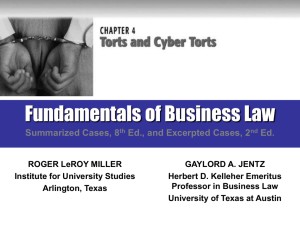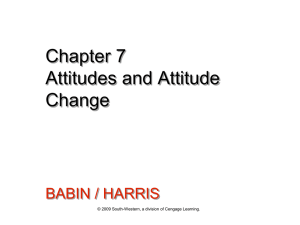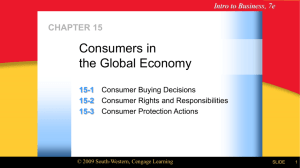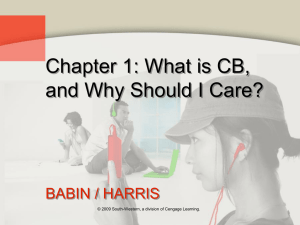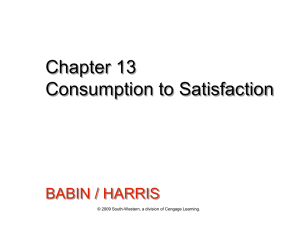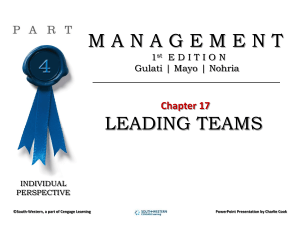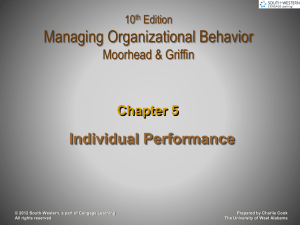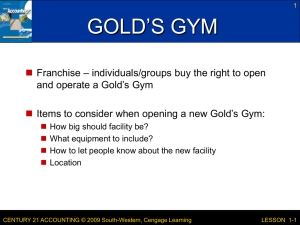LO 3 - misweb
advertisement
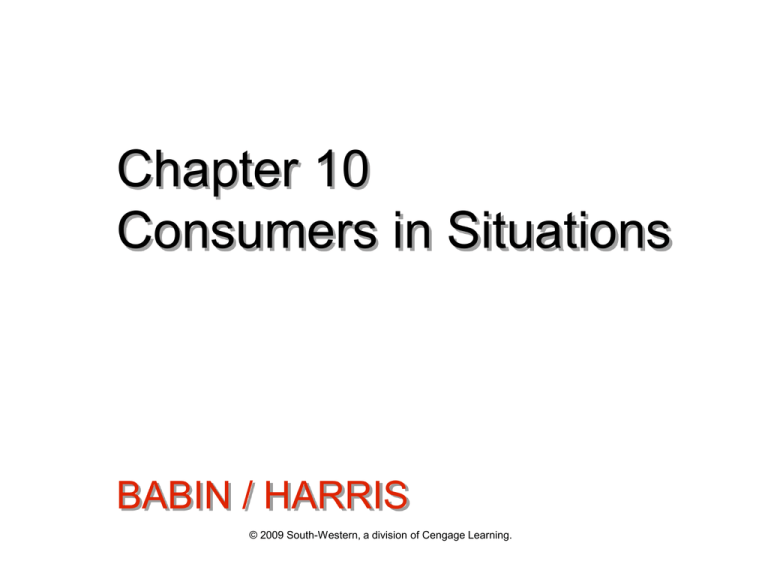
Chapter 10 Consumers in Situations BABIN / HARRIS © 2009 South-Western, a division of Cengage Learning. Learning Outcomes LO1 Understand how value varies with situations. LO2 Know the different ways that time affects consumer behavior. LO3 Distinguish the concepts of unplanned, impulse and compulsive consumer behavior. LO4 Use the concept of atmospherics to create consumer value. © 2009 South-Western, a division of Cengage Learning. 10-2 LO1 How Value Varies with Situations Situational influences: contextual effects independent of enduring consumer, brand, or product characteristics. How would your choice of beverage change… - If you have the flu? - If your friend says “Oh, that stuff is bad for you!” - If its Saturday night after a football victory? - If your parents take you to lunch? © 2009 South-Western, a division of Cengage Learning. 10-3 LO1 The Place is a Contextual Effect Popcorn becomes more valuable at the movies. Bottled water becomes more valuable at a football game in 95° weather. © 2009 South-Western, a division of Cengage Learning. 10-4 LO1 Shopping with Others Shopping with others: What happens when the situation involves shopping with a friend? Or what if you were shopping with a child? © 2009 South-Western, a division of Cengage Learning. 10-5 LO2 Time and Consumer Behavior Time pressure Time of year Time of day © 2009 South-Western, a division of Cengage Learning. 10-6 LO2 Time Pressure Timestyle: the way an individual allocates his time The effects of time on consumer behavior Example: time available to make a purchase Limited time available=increased time pressure Popularity of convenience stores Waiting is inconvenient! Rapid growth of Internet shopping Growth of time-saving products, i.e., Blackberries © 2009 South-Western, a division of Cengage Learning. 10-7 LO2 Time of Year: Time To Be SAD! Seasonal affective disorder (SAD) can affect consumers in many ways. Products exist to try to help consumers deal with it. © 2009 South-Western, a division of Cengage Learning. 10-8 LO3 Impulsive versus Unplanned Shopping Behavior Exhibit 10.4 © 2009 South-Western, a division of Cengage Learning. 10-9 LO3 Personality Traits • Impulsivity – represents how sensitive a consumer is to immediate rewards. • Consumer self-regulation – a tendency for consumers to inhibit outside, or situational, influences from interfering with shopping intentions. – Action-oriented – high capacity to selfregulate. – State-oriented – low capacity to self-regulate. © 2009 South-Western, a division of Cengage Learning. 10-10 LO3 Exhibit 10.5: Retail Approaches at Encouraging Impulse Purchases © 2009 South-Western, a division of Cengage Learning. 10-11 LO3 Compulsive Consumer Behavior Harmful Uncontrollable Driven by chronic depression © 2009 South-Western, a division of Cengage Learning. 10-12 LO4 Retail Atmospherics • Atmospherics defined – the emotional nature of an environment or more precisely, the feelings created by the total aura of physical attributes that comprise the physical environment. © 2009 South-Western, a division of Cengage Learning. 10-13 LO4 Exhibit 10.7 The Qualities of an Environment © 2009 South-Western, a division of Cengage Learning. 10-14 LO4 Color Background colors can affect consumer price and quality perceptions. © 2009 South-Western, a division of Cengage Learning. 10-15


